Available Woods Info
This is where I show some of the woods I offer for you to select to build your writing instrument. When you find one you like, go back and select it from the drop-down menu in the pen options screen.

Bocote
Bocote is a Mexican wood that is dense, oily and takes a great shine. Its black grain over a yellow/brown wood gives it a striking appearance.
Transform your pen with the striking beauty of our Bocote pen blanks. Sourced from the lush forests of Central and South America, Bocote is an exotic hardwood known for its distinctive grain patterns and rich, warm hues.

Bethlehem Olivewood
Heartwood is typically yellow to light reddish brown, with contrasting darker brown to black streaks and veins. Yellowish sapwood is generally sharply demarcated from the heartwood, though it can be harder to tell apart if the heartwood lacks contrasting streaks. Overall color tends to deepen with age. Olive is sometimes figured with curly or wavy grain, burl, or wild grain.
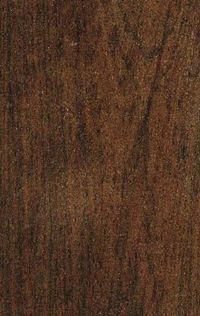
Brazilian Ebony
The Brazilian Ebony is one of the hardest commercial hardwoods you can ever find in the market today. Its scientific name is Swartzia Tomentosa, with a 3,692 Janka Hardness rating. It is heavy and dense and comes with straight grain. Besides, it exhibits an almost black color, so it gets often referred to as Ebony. Yet, despite being darker in tone, you will still notice its grain pattern sans using any lens.

Bubinga
Bubinga, a.k.a. African Rosewood, consists of two species (Guibourtia tessmannii and G. pellegriniana). It is a hard and heavy tropical wood grown in Cameroon, Gabon, and the Ivory Coast of eastern Africa. Some supplies of this wood available in North America are from environmentally responsible or managed sustainable sources
An immensely popular imported African hardwood, bubinga may be loved as much for its quirky name as it is for its strength and beauty. The wood is sometimes called kevazingo, a name usually applied to its decorative rotary-cut veneer. In addition to its myriad grain patterns, its strength-to-weight ratio (specifically its MOR) also ranks among the very best in the world.
Bubinga has a close resemblance to rosewood, and is sometimes called African rosewood—though this name is more commonly applied to another Guibourtia species, Guibourtia coleosperma. However, its similarity to true rosewoods has been a double-edged sword, as the wood has been heavily exploited in recent years in the Chinese hongmu (rosewood) market—resulting in a ban not only on true rosewoods, but also bubinga as well.
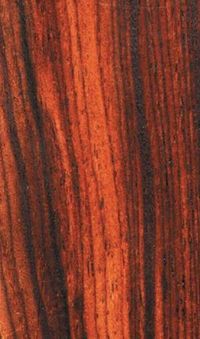
Cocobolo
Cocobolo or cocobolo (Dalbergia retusa) is one of the most beautiful woods in the world. (Sometimes cocobolo is called Nicaragua rosewood. In Mexico, the wood is called granadillo.) The Dalbergia genus also includes Brazilian rosewood and Honduras rosewood, but cocobolo is heavier, stronger, and often considered more beautiful.

Goncalo Alves
Goncalo Alves, aka as Tigerwood, is one of the most exotic woods from Brazil. Its rich, contrasting colors and striped patterns set it apart as an exquisite choice for a variety of projects. This high-quality stock is dry and ready to use. It is dense and naturally oily, making it a clear choice for turnery. A glass-like natural polish is easily achievable.

Jacaranda / Brazilian Rosewood
Brazilian rosewood, also called Jacaranda, is perhaps one of the most beautiful woods in the world. However, extensive harvesting over the past three centuries has virtually eliminated this tree from the Brazilian forests, so today it is not supposed to be harvested. The only material that can be sold legally is old stock; such material has to display a CITES Certificate, noting special approval. As might be expected, the wood is expensive.

Padauk
Padauk wood is a dense, and heavy hardwood native to Central and tropical West Africa. It is known for its beautiful reddish-orange color and is commonly used for furniture making, musical instruments, flooring, and decorative veneers. Padauk is considered an exotic wood due to its extraordinary appearance and outstanding strength and natural durability.
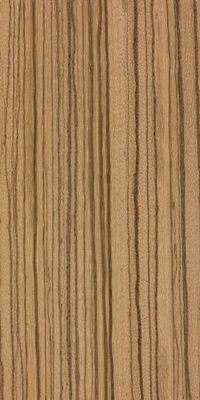
Zebra Wood
Heartwood is a light brown or cream color with dark blackish brown streaks vaguely resembling a zebra’s stripes. Depending on whether the wood is flatsawn or quartersawn, the stripes can be either wide and erratic (flatsawn), or somewhat narrow and uniform (quartersawn).

Wenge
Heartwood is medium brown, sometimes with a reddish or yellowish hue, with nearly black streaks. Upon application of a wood finish (particularly an oil finish), the wood can become nearly black. However, unlike most other dark hardwoods, the heartwood of wenge can lighten (rather than darken) when exposed to sunlight. There is also a white Wenge
The grain is straight, with a very coarse texture and Low natural luster.
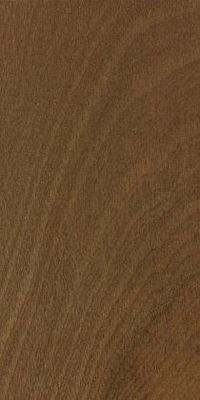
Sapele
Heartwood is a golden to dark reddish brown. Color tends to darken with age. Besides the common ribbon pattern seen on quartersawn boards, Sapele is also known for a wide variety of other figured grain patterns, such as pommele, quilted, mottled, wavy, beeswing, and fiddleback.
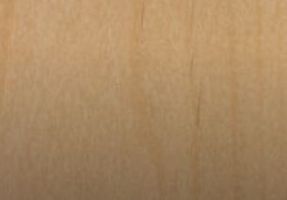
Red Alder
Red alder tends to be a light tan to reddish brown; the color darkens and reddens with age. There is no visible distinction between heartwood and sapwood. Large aggregate rays appear as occasional small streaks on the face grain that can be mistaken for defects in the wood.
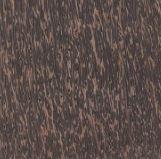
Black Palm
Black fibers are embedded in a lighter tan or light brown body. Fibers are more densely packed toward the outside of the tree trunk, becoming more and more sparse toward the tree's center. The center core of the tree is soft and contains none of the darker vascular bundles that give the wood its characteristic look and hardness. (This is nearly the opposite of the typical outer sapwood/inner heartwood combination found in dicot hardwoods.)
Black Palm has a medium to fine texture, though it is by no means even or uniform due to the contrast between the dense, darker fibers and the wood's soft, lighter cellulose structure. The grain is straight and contains no growth rings, knots, or defects.
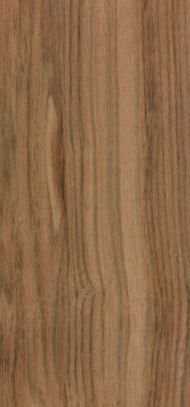
Chechen Wood
Dominican Republic, Cuba, Jamaica, Guatemala, Belize, and southeastern Mexico
Heartwood color is highly varied, with red, orange, and brown contrasted with darker stripes of blackish brown. With age, the color tends to shift to a darker reddish brown. Well-defined sapwood is pale yellow.
Grain is usually straight, but may be wild or interlocked. With a uniform medium to fine texture and good natural luster.
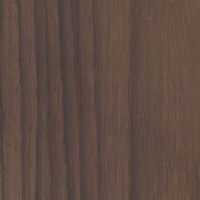
East Indian Rosewood
Heartwood of East Indian Rosewood can vary from a golden brown to a deep purplish brown, with darker brown streaks. The wood darkens with age, usually becoming a deep brown.
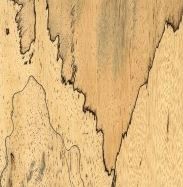
Spalted Tamarind
Native to tropical Africa;
widely planted throughout tropical regions worldwide..
Heartwood is a deep reddish brown, sometimes with a purplish hue—heartwood portions of Tamarind tend to be narrow and are usually only present in older and larger trees. The pale yellow sapwood is very wide and sharply demarcated from the heartwood. Spalting and other discoloration are very common in the sapwood, and the majority of the Tamarind available in the United States is spalted sapwood.
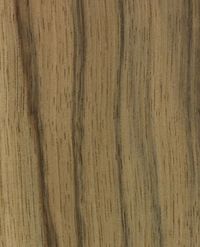
White Limba
Limba, korina, afara, black limba, white limba. Tropical western Africa
Heartwood is a light yellowish to golden brown, sometimes with grey to nearly black streaks and veins. Wood with such darker figures is referred to as black limba, while plain unfigured wood is called white limba. Sapwood is a pale greyish to yellowish brown, not demarcated from the heartwood. Overall color tends to darken with age.
Grain is straight to slightly interlocked, with a uniformly coarse texture. Moderate natural luster.
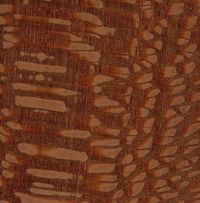
Leopardwood
Central and South America.
Has a very conspicuous flecking that gives this wood its namesake. The wood itself is a medium to dark reddish brown with grey or light brown rays, which resemble the spots of a leopard. Like other woods that exhibit the strongest figure in quartersawn pieces, (such as Sycamore), Leopardwood has the most pronounced figure and displays the largest flecks when perfectly quartersawn; this is due to the wood’s wide medullary rays, whose layout can be seen in the clearest when looking at the end-grain..